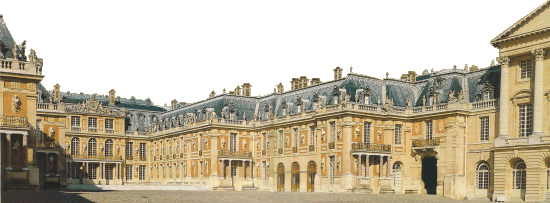VERSAILLES |
VERSAILLES |

![]()
|
![]()
Ambassador staircase |
Hall of mirrors |
Salon of Venus |
Full view of the palace |
From king's bedroom |
Palace (park side) |
Bedroom of Louis XIV |
Versailles by Louis XIII |
Louis in his bedroom |
![]()
His love-affair with Mademoiselle de la Vallière,
which at first was covered as far as possible with a veil of mystery, was
the cause of frequent excursions to Versailles. This was at that time at
small country house, built by Louis XIII to avoid the unpleasant necessity,
which had sometimes befallen him, of sleeping at a wretched wayside tavern
or in a windmill, when benighted out hunting in the forest of St. Leger....
The visits of Louis XIV becoming more frequent, he enlarged the château
by degrees till its immense buildings afforded better accommodation for the
Court than was to be found at St. Germain, where most of the courtiers had
to put up with uncomfortable lodgings in the town. The Court was therefore
removed to Versailles in 1682, not long before the Queen's death. The new
building contained an infinite number of rooms for courtiers, and the King
liked the grant of these rooms to be regarded as a coveted privilege.
"
|
![]()
Louis XIV in Versailles |
Versailles in 1664 |
Louis' bedroom windows |
![]()
|
![]()

![]()
![]()
Bath of Apollo |
Ship in Versailles' park |
Palace (park side) |
![]()
| VISIT ALSO: |
|
Made By Ira Joe